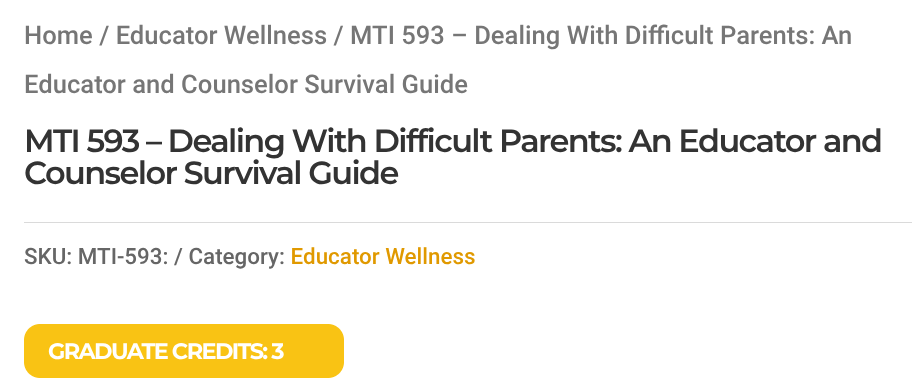9 Proven Strategies to Build Parent Teacher Relationships
Building positive relationships with parents is crucial for student success. It bridges the home and school, fostering meaningful exchanges that nurture student well being and academic progress. This article explores practical strategies for how to build positive relationships with parents as a teacher, even with a busy schedule.
Table Of Contents
- Start with Positive Communication
- Embrace Consistent Communication
- Make Your Communications Engaging
- Leverage Technology
- Be Transparent About Student Progress
- Create Opportunities for In Person Connections
- Embrace Diversity and Inclusion
- Be Solution Oriented
- Provide Resources for Parent Support
- FAQs about how to build positive relationships with parents as a teacher
Start with Positive Communication
A powerful way to build positive parent teacher relationships is to start with good news. Parents are used to hearing from teachers when there is a problem. Sharing positive observations about their child can be a refreshing change and helps develop positive relationships with parents.
Aim to contact one family each school day with a brief, positive message. For example:
“I noticed Sophia helping a classmate with a math problem today. Her kindness and patience were impressive.”
This shows parents you are attentive to their child’s strengths. It also builds trust, which makes future challenging conversations easier because you have already created a positive rapport.
According to the American Federation of Teachers, frequent parent teacher communication about students significantly contributes to student academic achievement.

Embrace Consistent Communication
Consistency is essential in communication with families. Maintain a regular schedule, whether you use a behavior chart, a weekly newsletter, or a digital platform. This shows parents you value their time and keeps them informed in a predictable way. Consistent communication fosters a sense of stability and builds trust.
A study in the Journal of Research on Educational Effectiveness found that frequent teacher family communication increases student engagement. The study reported around a forty percent increase in homework completion and about a fifteen percent increase in class participation.
In many classrooms, student effort is closely tied to the quality of communication between home and school. Positive and regular messages from school can motivate students because everyone enjoys good news about their child.
Consider this simple communication structure:
| Frequency | Content |
|---|---|
| Daily | Individual positive notes, rotating through students |
| Weekly | Class newsletter with upcoming topics, events, and reminders |
| Monthly | Individual student progress updates |
| Each semester | Conferences with parents |
These different levels of communication help parents feel connected and informed throughout the school year. They also support student success by keeping everyone on the same page. You can even write your weekly lesson plans and then send a brief email summary of the main topics for families. The goal is not to send detailed lesson plans, just a simple overview of what students are learning.
Make Your Communications Engaging
Not all parents read every newsletter from start to finish. To capture attention, make your communications engaging by featuring student work and student voice. Parents connect more when they see their own child represented.
You might:
- Include student written articles or reflections in your newsletter
- Share photos of students engaged in learning activities, while following school privacy guidelines
- Highlight student quotes about recent lessons or projects
This approach increases parent engagement and gives students pride in their learning. When you think about how to build positive relationships with parents as a teacher, showcasing student work makes communication feel more meaningful and less like a list of announcements. It also encourages a sense of community in your classroom and helps parents feel more connected to what happens during the school day.
Leverage Technology
Technology can make parent teacher relationships smoother and more efficient. Platforms such as Class Dojo or Seesaw allow real time updates, photos, and messages. For example, using a digital portfolio feature lets students share photos of their work and short reflections with parents during the school day.

Engage parents and foster strong parent-teacher connections by providing regular updates about student work and class activities. This consistent communication through technology helps create a positive and inclusive classroom environment.

This gives parents a window into their child’s experience and sparks meaningful conversations at home. Sharing pictures regularly can be especially helpful for busy families who cannot visit the classroom often but still want to stay involved.
When used thoughtfully, these tools help you engage parents and support strong communication without adding a lot of extra work. Consistent use of technology can help create a positive and inclusive classroom environment where families feel informed and valued.
Be Transparent About Student Progress
Parents appreciate regular, clear updates about their child’s academic progress. Instead of waiting for report cards, consider sending brief progress reports that include:
- Current performance in key subject areas
- Grade level expectations in friendly language
- Areas for improvement or growth
- Simple strategies families can use at home to help
Being transparent about student progress helps prevent surprises and allows families to support learning early, rather than reacting later. This practice benefits both students and parents and can lead to more productive conferences and meetings. You can also invite questions from parents so they feel comfortable reaching out if something is unclear.

Create Opportunities for In Person Connections
Digital communication is convenient, but in person interactions often build deeper connections. Small efforts to meet parents face to face can make a big difference.
You might:
- Greet parents at drop off and pick up when possible
- Invite parents to volunteer in the classroom or on field trips
- Host informal coffee chats, open classroom days, or family picnics
These interactions help create a welcoming atmosphere and can improve parent engagement, especially for families who have had negative experiences with school in the past. When parents feel comfortable at school, they are more likely to communicate openly and partner with you to support their child.
Embrace Diversity and Inclusion
Creating an inclusive classroom where all families feel welcome and valued is essential in a diverse school community. Embracing diversity helps students and families feel a sense of belonging, regardless of their background.
Some practical ideas include:
- Respecting cultural differences in communication styles and educational expectations
- Providing translated documents or interpreter support for families who do not speak English as a first language
- Celebrating a variety of cultural holidays and traditions throughout the year
- Inviting parents to share cultural stories, music, food, or experiences with the class
Understanding parents’ cultural backgrounds strengthens relationships and helps you work together as a parent teacher student team. When families see their culture reflected and respected at school, it supports trust and encourages greater involvement.
Be Solution Oriented
When challenges arise, focus on solutions rather than only describing the problem. A calm, solution oriented approach shows parents that you are on the same side and are working together for the child’s success.
Invite parents to share their ideas and listen carefully to their concerns. This shows respect and can uncover helpful strategies you might not have considered. Many educators find it useful to study frameworks for difficult conversations, such as those found in the book “Fierce Conversations” by Susan Scott, which emphasizes authenticity and collaboration.
If you are interested in further study, courses such as MTI 593 can help deepen your skills in having productive, honest conversations about student needs. These skills can be especially valuable when building strong parent teacher student team relationships.

Provide Resources for Parent Support
Many parents want to help their child at home but are not sure where to start. Providing simple, practical resources can turn that uncertainty into confidence and support.
You might share:
- Lists of educational websites or apps for practice at home
- Tips for creating a quiet, organized space for homework
- Suggestions for family activities that build reading, math, or problem solving skills
For example, the Twinkl Parents Hub offers a wide range of resources families can use to support learning outside of school. When schools share tools like this, they can transform a common weakness into a genuine strength in the home school partnership.
FAQs about how to build positive relationships with parents as a teacher
How can teachers build a relationship with parents?
Teachers can start by sharing positive news, maintaining consistent communication, being transparent about student progress, and offering guidance for learning at home. Creating chances for in person contact, such as conferences or informal meetings, also helps build trust and connection.
How do you build positive relationships with parents?
Building positive relationships involves regular, respectful communication that includes both good news and concerns. It also means honoring cultural differences, being open to feedback, and focusing on solutions when issues arise. Some teachers even use book clubs or family learning nights to build community and strengthen relationships.
How will you support a positive relationship with the parents in your classroom?
You can support positive relationships by sending regular updates, inviting parents to classroom activities, being accessible for questions, and sharing resources for at home learning. Weekly newsletters, sharing student work, or sending brief email summaries of upcoming events can go a long way. Simple appreciative messages that recognize parent efforts can also make families feel valued.
How can teachers work effectively with parents?
Teachers work most effectively with parents when they set clear communication channels and expectations early in the year. Involving parents in appropriate decisions, responding to concerns promptly, and focusing on collaborative problem solving all help promote student success. The goal is to work as partners rather than as separate teams.
Conclusion
Learning how to build positive relationships with parents is an ongoing process that requires effort, empathy, and consistency. When you implement these strategies, you create a strong support system for students, families, and teachers. Each positive interaction builds trust and improves engagement, both in the classroom and at home.
Try starting small, choosing one or two strategies to implement consistently, and adjust based on feedback from families. Over time, strong parent teacher relationships create a supportive learning environment that extends beyond the classroom walls.
If you are interested in learning more, consider taking one of the graduate classes at Midwest Teachers Institute. They offer affordable graduate courses designed by experienced teachers.
There are no hidden costs, and you can review the syllabus before you sign up. Some surprises are fun, but they should not involve your money or your time.
If you are interested in teaching with Midwest Teachers Institute, you can reach out through their social media channels or send an email to [email protected] for more details.





















